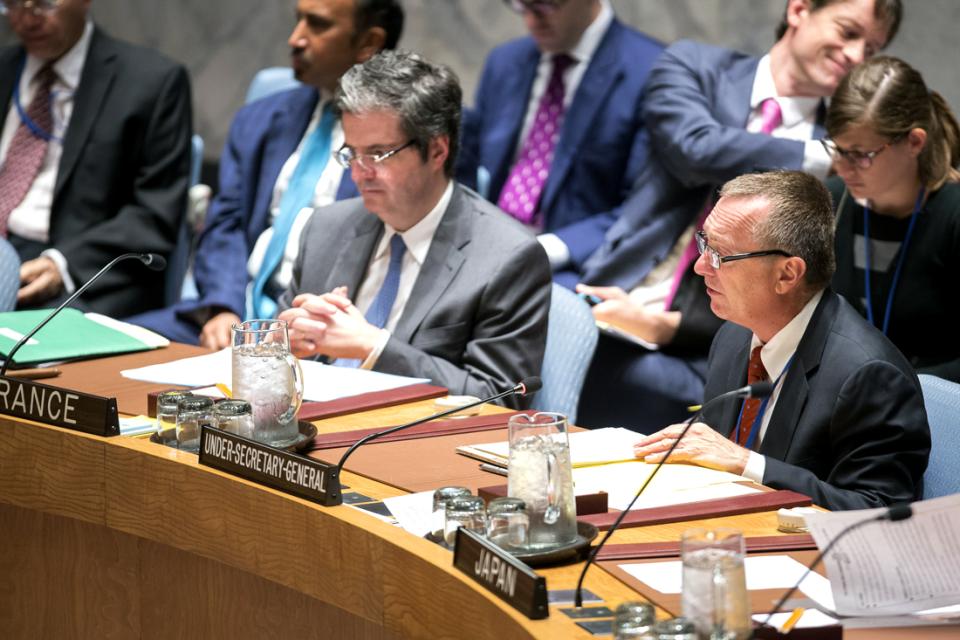
Since January 2016, the Islamic State in Iraq and the Levant (ISIL, or Da’esh) has remained under continuous military pressure and experienced several setbacks in the Syrian Republic and in Iraq. The number of ISIL fighters is estimated to have diminished to between 12,000 and 20,000. It is nevertheless critical for Member States to remain vigilant, as the active and increasingly transnational threat that this and other terrorist groups represent continues to severely undermine international peace and security. These are among the key points from the Secretary-General’s 5th report on The threat posed by ISIL (Da’esh) to international peace and security and the range of United Nations efforts in support of Member States in countering the threat.
Published on 31 May 2017, the report (S/2017/467) was submitted as a follow-up to Security Council resolution 2253 (2015), which requests the Secretary-General to submit updates every four months on the threat that ISIL represents to the international community and the principles and values of the Charter of the United Nations.
“In Europe, ISIL has used its online presence to encourage supporters to mount attacks in their countries of residence. This has led to multiple attacks, including in Belgium, France, Germany, the Russian Federation, Sweden, Turkey, and the United Kingdom. Some attacks were carried out by foreign terrorist fighter returnees, while others were conducted by individuals who had not travelled to conflict zones. Despite being sometimes labelled as ‘lone actors,’ investigations demonstrate that the perpetrators often received support or resources from facilitators and, in a number of cases, were in direct contact with ISIL enablers,” noted Under-Secretary-General for Political Affairs Jeffrey Feltman during his briefing to the Security Council on 8 June 2017.
ISIL is at a critical moment in terms of its financial situation, according to the report. The group has suffered a reversal of fortune over the last 16 months. Most of the group’s funding comes from taxes and coercive extraction from agricultural or commercial activity. In addition, ISIL has drawn income from antiquities smuggling, sale of electricity, exploitation of mineral resources, external donations, kidnapping for ransom, and human trafficking. The Office of the Special Representative of the Secretary-General (SRSG) on Sexual Violence in Conflict has documented instances of the selling, gifting, and trading of women and children among fighters as another source of income.
The report highlights the importance of effective monitoring of terrorist exploitation of information and communications technology, as well as the benefits of developing prosecution, rehabilitation and reintegration strategies for returning foreign terrorist fighters in accordance with Security Council resolution 2178 (2014).
The report was prepared with the input of the Counter-Terrorism Committee Executive Directorate (CTED), in close collaboration with the Monitoring Team of the 1267/1989/2253 ISIL (Da’esh) and Al-Qaida Sanctions Committee, as well as other relevant United Nations actors and international organizations.

